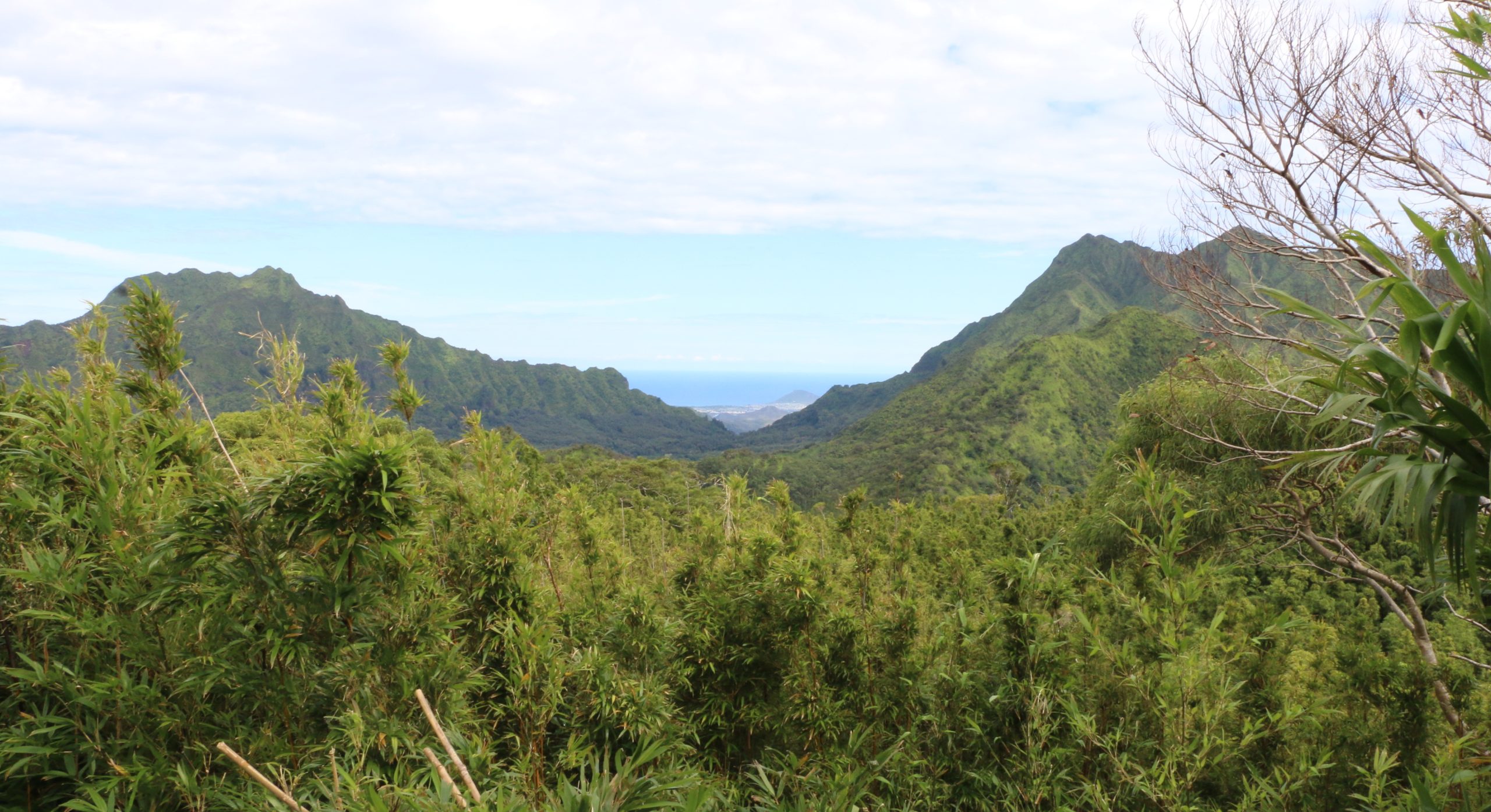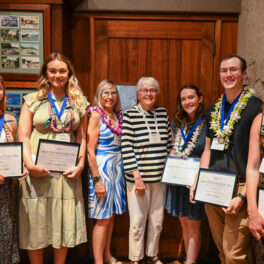Endangered Hawaiian picture-winged flies a key piece to restored ecosystem
 Palikea, in the Waiʻanae Range, may be the only remaining site for Hawaiian picture-winged flies. Credit: DLNR.
Palikea, in the Waiʻanae Range, may be the only remaining site for Hawaiian picture-winged flies. Credit: DLNR.Small invertebrates and microfauna, like endangered Hawaiian picture-winged flies, play an important role in providing balance to natural ecosystems.
Scientists at the University of Hawaiʻi (UH) at Mānoa and the Hawai‘i State Department of Land and Natural Resources (DLNR) Division of Forestry and Wildlife are working together to re-establish picture-winged fly populations, including Drosophila hemipeza, an endangered species. The project’s aim is to help restore ecosystem stability, support natural biodiversity, and reduce the likelihood of the species’ extinction.
Historically, picture-winged fly populations were found at multiple sites in both the Ko‘olau and Wai‘anae mountain ranges of O‘ahu. Today, their numbers are greatly diminished, and their range is significantly reduced. It is believed that Palikea, in the Waiʻanae Range, may be the only remaining site for these flies and few are left there.
“Contributing factors to their decline include a range of issues that a lot of other native insects face: deforestation, predation and competition from invasives, native host plant destruction from pigs, and climate change,” said Kelli Konicek, Entomological Research Technician with the Hawai‘i Invertebrate Program.
Microbe supplements improve fly fitness
The researchers are working to stem that tide, rearing D. hemipeza in a lab to introduce into the wild. Through experimentation and ingenuity working with more common and abundant fly species, and leveraging long-term knowledge developed by UH Manoa researchers at the Hawaiian Drosophila Research Stock Center, the team developed an effective mass rearing regimen that has proven very effective.
“In the lab, we are trying different methods involving the microbiome to improve reproduction and to understand how a switch from a controlled lab diet and environment to field conditions may impact the flies,” said Joanne Yew, a researcher at the Pacific Biosciences Research Center (PBRC) in the UH Mānoa School of Ocean and Earth Science and Technology and Konicek’s research mentor. “In our experiments, we provide microbe supplements, either from native host plants or from other Hawaiian Drosophila, to developing flies and assess the impact on physiological changes such as egg number and number of offspring.”
The flies are raised in the UH Mānoa Insectary for Scientific Training and Advances in Research, a facility led and managed by a team of PBRC researchers and faculty. Incorporating microbe supplements, the group hopes to ensure the reared flies are fit and healthy enough to be introduced into nature.
Promising findings at the field site
The team is slowly releasing these flies at a Mānoa Cliff Restoration site, containing several native host plant species in which D. hemipeza are known to breed. Native ‘ōhā wai, hāhā, and ōpuhe have been planted by a dedicated group of volunteers in cooperation with DOFAW’s Plant Extinction Prevention Program.
Releases began in October 2022 and by early January, Konicek observed the first unmarked D. hemipeza at the site, a sign that the species is successfully reproducing on its own.
“It’s really promising to observe flies at the site that we know are not lab-reared,” said DLNR Entomologist Cynthia King. “However, we’ll need to continue the introductions to increase the likelihood the species will establish in the long-term.”
“There is a constant exchange of signals between animals and the microbes in their gut,” said Yew. “What we’re learning from the Hawaiian flies is that the microbiome can have large effects on host reproduction and behavior. Studying the Hawaiian Drosophila and their relationship with their gut microbes will allow us to understand how this sort of inter-kingdom chemical communication shapes the physiology of their host and may influence evolution.”
In conservation efforts, small invertebrates and microfauna often receive less attention than their larger animal counterparts, but their role in supporting biodiversity and ecosystem health is critical. By conserving endangered species such as the Hawaiian picture-winged fly, DLNR is aiming to create holistic, restored ecosystems.




